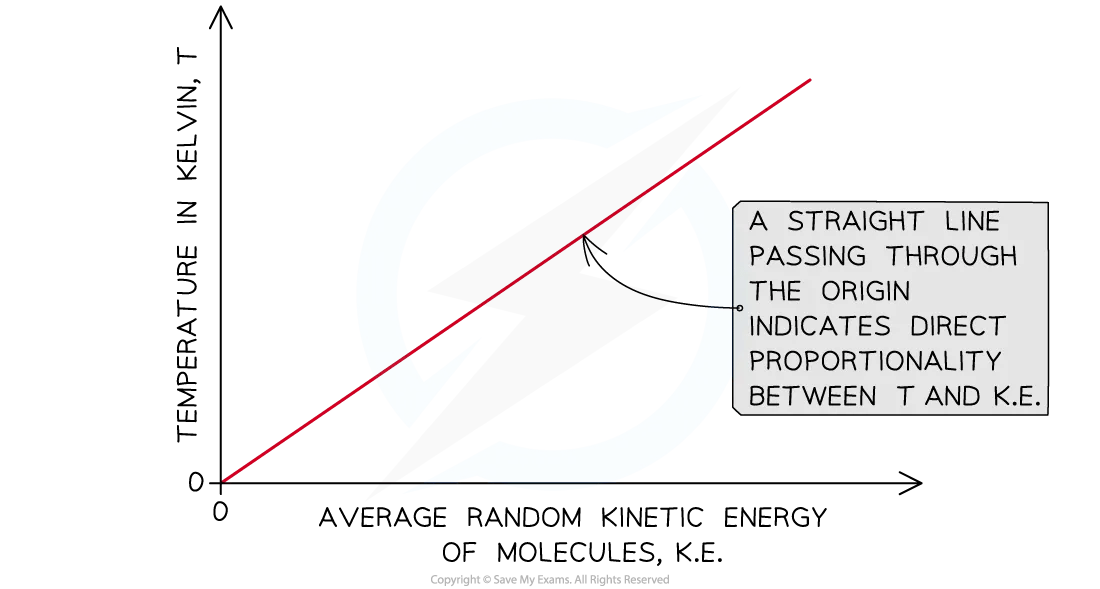Temperature & Kinetic Energy (DP IB Physics) : Revision Note
Temperature & Kinetic Energy
Particles in gases usually have a range of speeds
The average kinetic energy of the particles Ek can be calculated using the equation
Where:
Ek = average kinetic energy of the particles in joules (J)
kB = 1.38 × 10–23 J K–1 (Boltzmann's constant)
T = absolute temperature in kelvin (K)
This tells us that the absolute temperature of a body is directly proportional to the average kinetic energy of the molecules within the body
Relationship between absolute temperature and average random kinetic energy of molecules

Worked Example
The surface temperature of the Sun is 5800 K and contains mainly hydrogen atoms.
Calculate the average speed of the hydrogen atoms, in km s−1, near the surface of the Sun.
Answer:
Step 1: List the known quantities
Temperature, T = 5800 K
Mass of a hydrogen atom = mass of a proton, mp = 1.673 × 10−27 kg
Boltzmann constant, kB = 1.38 × 10−23 J K−1
Step 2: Equate the equations relating kinetic energy with temperature and speed
Average kinetic energy of a molecule:
Kinetic energy:
Step 3: Rearrange for average speed and calculate
Average speed: v = 11 980 m s−1 = 12 km s−1

You've read 0 of your 5 free revision notes this week
Sign up now. It’s free!
Did this page help you?
